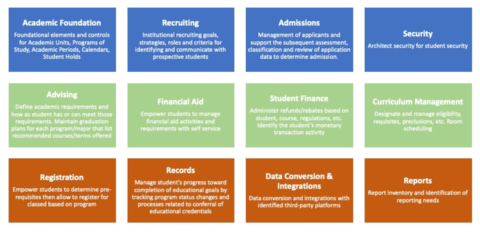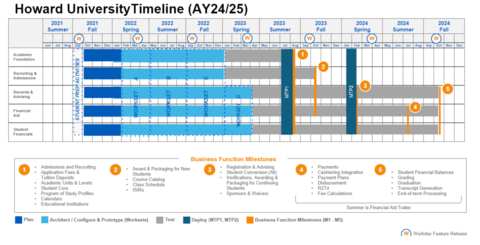Workday Student
We are excited to announce that Howard University will be moving many student-related activities from Banner to Workday Student. As you know, the university moved all finance, payroll, and human resource functions to Workday in July of this year. With the addition of Workday Student, Howard University is at the forefront of modernization as the landscape of higher education and technology continues to evolve.
Workday Student gives us an opportunity to implement a modern platform for all student information that can meet the university's need for flexibility and growth. Workday Student allows students, faculty, and staff to take advantage of features that improve access to information, communication, and the overall user experience. Students will enjoy mobile capabilities, alerts and reminders, while faculty and staff will have access to dashboards and reporting. This fully integrated technology platform will improve consistency and streamline business processes to better support the educational mission of Howard University and fulfill the objectives of the Howard Forward strategic plan.
Project Scope at a Glance
Timeline
The Workday Student implementation is a 3-year plan scheduled to go live at Howard in Fall 2024. Given the high complexity of the project, the team has adopted a carefully planned phased approach which is highlighted in the timeline below.
Accomplishments to Date
-
Official project kick-off – 10/25/21
-
Milestone 1 – Discovery Workshops – 11/19
-
Milestone 2 – Planning Workshops – 12/10
Status
The Workday Student project is currently in the Plan stage and will soon transition to Architect, Configure & Prototype Stage (ACP), the second of four implementation phases.
-
Stage 1: Plan- The project team is being trained, planning the calendars, and setting up the project scope and timelines.
-
Stage 2: Architect, Configure & Prototype- The project team gathers academic process requirements and technical specifications, then uses them to configure the software solution. The team also prepares for testing activities during this stage.
-
Stage 3: Test – the team execute the testing of all processes configured in the system. Defects, bugs and issues are identified, analyzed and resolved.
-
Stage 4 – Deploy – Once the system is thoroughly tested (both functionally and in several iterations, and technically to include all integrations), it is moved onto production and is ready for the teams to begin operating in it.


